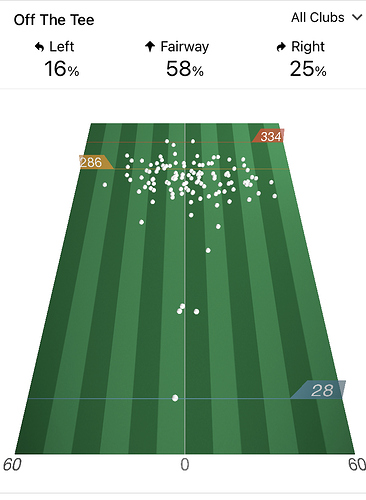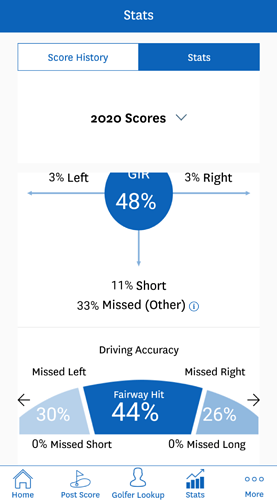@ScottFawcettDECADE had a tweet up today saying that a one way miss wasn’t a thing… interestingly, I had just finished arguing the benefits of it with the pros at my club.
He was responding to the No Laying Up guys saying DJ had “eliminated the left side of the golf course”, so unless he has time to chime in here, I’m going to assume what he means is even the best players are going to occasionally miss to the “wrong” side of their target line… basically that our miss patterns will always fall on both sides of our target line, and that even the best of us can pull one / yank one / rope hook one on occasion.
He obviously has the data on this, and I’m not going to get into an argument I can’t win (unless my wife is involved)… but I still think the fundamental has value, even if it’s only 80% true.
Last season, I was pretty reliably fading the golf ball… I actually started the season with a mediocre swing that was consistent enough to get away with… as I took lessons and improved path and impact position, it became a reliable fade…
With a reliable fade, my target became the middle of the fairway, but my AIM moved further left. I’d aim down the left rough, and my fade would bring me back to center… a big miss would stay in play right and a mediocre swing would put me left of target, and most likely into the left rough.
By moving my aim left, I moved my dispersion out of trouble (aiming down the middle would have brought OB right into play)… so I could still MISS left, i wasn’t majorly punished… Basically, the only penalty strokes were going to be big mistakes in either direction (and the majority went right).
To me, that’s “eliminating” a left miss, even if the data has balls left of my target (and occasionally left of my aim).
I don’t know if that’s a semantics based argument or if I’m missing the point, but I figured I’d take it here and see what others thought.



